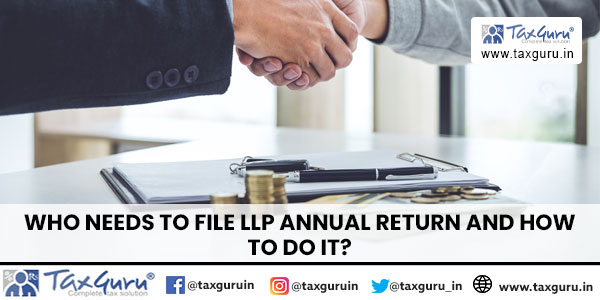Limited Liability Partnerships (LLPs) in India need to follow annual submitting requirements to preserve their felony fame. LLP Annual Return Filing is a mandatory method that guarantees transparency and compliance with the Ministry of Corporate Affairs (MCA).
Who Needs to File LLP Annual Return?
All LLPs registered in India, irrespective of their turnover or earnings, ought to document annual returns. This includes:
Active LLPs: Even if there is no enterprise pastime, filing is compulsory.
LLPs with NIL Transactions: LLPs without sales need to still post NIL returns.

LLP Exceeding Financial Limits: If the LLP’s turnover exceeds ₹40 lakh or the contribution is above ₹25 lakh, an audit is obligatory.
How to File an LLP Annual Return?
Filing LLP annual returns includes submitting two predominant forms:
1. Form 11 (Annual Return)
Due Date: May 30 of every financial year
Details Required: LLP name, partners’ information, and contribution
Steps to File:
-
Log in to the MCA portal
-
Fill Form 11 with LLP information
-
Digitally sign the usage of a Designated Partner’s DSC (Digital Signature Certificate)
-
Submit and pay the applicable prices
2. Form 8 (Statement of Account & Solvency)
Due Date: October 30 every year
Details Required: Financial statements, profits, liabilities
Steps to File:
-
Prepare economic statements
-
Log in to the MCA portal
-
Complete Form 8 and fix assisting documents
-
Digitally sign and post
Penalties for Late Filing
An overdue fee of ₹100 according to day applies for each behind-schedule shape.
Continuous non-compliance may additionally cause prison movement or LLP strike-off.
Conclusion
Every LLP, regardless of its business hobby, ought to complete LLP Annual Return Filing on time to keep away from penalties. Filing Form 11 and Form eight on or before the due dates guarantees compliance with MCA policies. Stay updated, record on time, and maintain your LLP’s legal standing.





